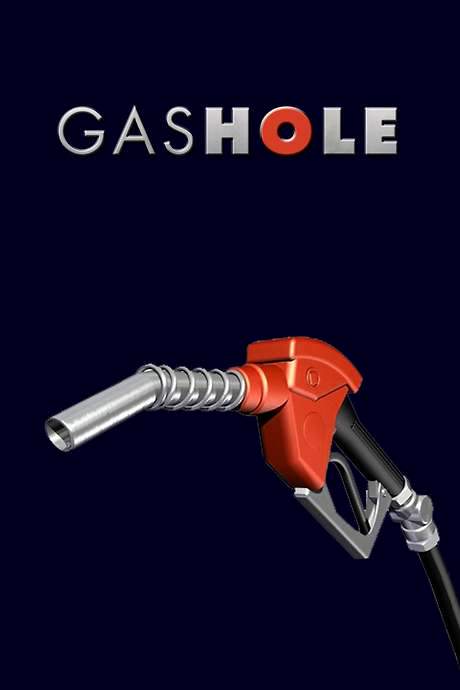
GasHole
Year: 2010
Runtime: 101 mins
Language: English
Directors: Jeremy Wagener, Scott Dwayne Roberts
It chronicles the evolution of oil prices and explores the prospects of alternative fuels, offering a broad yet detailed look at America’s reliance on foreign oil. The film investigates the factors that shifted the United States from a top oil exporter to the world’s largest importer.
Warning: spoilers below!
Haven’t seen GasHole yet? This summary contains major spoilers. Bookmark the page, watch the movie, and come back for the full breakdown. If you're ready, scroll on and relive the story!
GasHole (2010) – Full Plot Summary & Ending Explained
Read the complete plot breakdown of GasHole (2010), including all key story events, major twists, and the ending explained in detail. Discover what really happened—and what it all means.
The film opens with a series of archival clips featuring U.S. presidents discussing the need to reduce dependence on foreign oil, tracing a long-running national debate from the Nixon era to the presidency of George W. Bush. Narration guides these moments with a steady, documentary tone courtesy of Peter Gallagher, establishing a calm but pointed frame for the stories that follow. The screen moves between speeches and quiet analysis, painting energy policy as a battleground where political power, corporate interests, and public concern continually collide.
A notable early thread centers on a controversial, almost mythical-sounding claim: a “water-injected” 1946 Buick Roadmaster that allegedly reached 100 miles per gallon. The film describes the technique as humidifying the gasoline and increasing pressure to squeeze extra mileage, then notes that Shell Oil reportedly kept questions about the idea buried. It extends the discussion with reference to a 1977 Shell scientists’ book, Fuel Economy of the Gas Engine, which supposedly records 150 miles per gallon in a 1947 Studebaker. The narrative also recalls a May 1, 1977 El Paso Times front-page story entitled “200 Miles on 2 Gallons of Gas,” centered on Tom Ogle, who was later found dead in the desert and whose car disappeared. Throughout this thread, the documentary makes no effort to verify the authenticity of the water-injected engine or the other asserted facts, leaving the veracity of these claims unresolved and open to interpretation.
In the wake of Hurricane Katrina, the film moves to the intensive energy hearings that followed, where both the Senate and the House examined the sudden rise in gasoline prices, the first time they had topped three dollars a gallon. A congressman questions whether oil companies might be taking advantage of the situation, and a committee chairman is shown deciding not to compel the CEOs of those companies to testify under oath. Senator Gordon H. Smith observes that Gulf crude isn’t used on the West Coast, even as prices spike there. The documentary cites a November 10, 2005 Chevron statement warning that if refining capacity does not rise, substantial gains in refining margins will remain unlikely. Representative Nancy Pelosi argues that Shell’s claims about a California refinery—one that Shell says has no buyers—are misleading, pointing to the refinery’s profitability and its importance to state supply. The film thus situates the price surge within a web of industry strategy and political rhetoric.
As the narrative unfolds into 2006, the House Energy Committee meeting on May 11 reveals further tension between the oil industry and public policy. Representative Anna Eshoo asks why ExxonMobil would pursue new investment profits if the U.S. isn’t building more domestically, and Joe Barton, then the committee’s chairman, counters that it would be a low blow to weaponize what ExxonMobil has said against them. He adds a blunt stance about priorities, signaling that on his watch, some issues—like global warming—are no longer on the table. Throughout these exchanges, the film reminds viewers of the political calculus at play, including the broader pattern of industry donations: since 1990, oil companies have contributed roughly $49 million to Democrats and about $150 million to Republicans, while prices climbed steadily—rising from about $1.47 per gallon in 2001 to around $3.12 by mid-2007. The documentary notes the orbit of influence surrounding the debate and raises questions about the alignment between presidential power, congressional action, and the oil industry’s interests.
The documentary also foregrounds the presence of contemporary figures through archive footage, including Joshua Jackson and Barbara Boxer, while continuing to weave in commentary from various actors and policymakers whose voices punctuate the larger narrative about energy, policy, and accountability. The film’s portraits of these individuals—along with the repeated reference points to presidential statements and industry assertions—build a portrait of a complex system in which data, rhetoric, and power continually interact.
Overall, the film presents a thoughtful, sometimes provocative investigation into how the U.S. navigates energy security, corporate influence, and political decision-making. It situates the rise in gasoline prices within a broader conversation about refining capacity, profitability, and public trust, inviting viewers to consider how history, industry claims, and political maneuvers shape the country’s relationship with oil. The result is a long, carefully structured exploration that remains faithful to the core events and tensions it chronicles, without overreaching beyond what the documentary presents.
Last Updated: October 09, 2025 at 17:01
Explore Movie Threads
Discover curated groups of movies connected by mood, themes, and story style. Browse collections built around emotion, atmosphere, and narrative focus to easily find films that match what you feel like watching right now.
Analytical documentaries about systemic power like GasHole
Documentaries that calmly unravel complex webs of political and corporate influence.If you liked the investigative approach of GasHole, explore more movies like it. This section features documentaries that methodically examine political corruption, corporate influence, and economic history with a calm, steady narrative pace.
Narrative Summary
Narratives in this thread typically unfold as a logical, evidence-based argument. They connect disparate data points and historical threads to build a coherent case about a systemic problem, often concluding with a call for awareness or change without resorting to heavy emotional manipulation.
Why These Movies?
These films are grouped together because they share a specific analytical mood and narrative structure. They maintain a neutral tone, methodical pacing, and a focus on exposing complex, real-world issues through careful research and exposition.
Movies about energy policy and industry like GasHole
Stories that explore the intricate workings of a crucial industry or economic sector.Find films similar to GasHole's focus on the oil industry. This section includes documentaries and dramas that explore the inner workings of major industries, economic policy, and technological evolution with moderate complexity.
Narrative Summary
The narrative pattern involves explaining a complex system from its origins to its modern-day implications. Films often trace a timeline, introduce key players and technologies, and analyze the consequences of policy decisions, creating a layered but coherent understanding for the viewer.
Why These Movies?
These movies are united by their subject matter focus and explanatory approach. They share a moderate complexity as they break down intricate topics, a medium emotional weight due to the seriousness of the subject, and a thoughtful mood aimed at fostering understanding.
Unlock the Full Story of GasHole
Don't stop at just watching — explore GasHole in full detail. From the complete plot summary and scene-by-scene timeline to character breakdowns, thematic analysis, and a deep dive into the ending — every page helps you truly understand what GasHole is all about. Plus, discover what's next after the movie.
GasHole Timeline
Track the full timeline of GasHole with every major event arranged chronologically. Perfect for decoding non-linear storytelling, flashbacks, or parallel narratives with a clear scene-by-scene breakdown.

Characters, Settings & Themes in GasHole
Discover the characters, locations, and core themes that shape GasHole. Get insights into symbolic elements, setting significance, and deeper narrative meaning — ideal for thematic analysis and movie breakdowns.

GasHole Spoiler-Free Summary
Get a quick, spoiler-free overview of GasHole that covers the main plot points and key details without revealing any major twists or spoilers. Perfect for those who want to know what to expect before diving in.

More About GasHole
Visit What's After the Movie to explore more about GasHole: box office results, cast and crew info, production details, post-credit scenes, and external links — all in one place for movie fans and researchers.


























